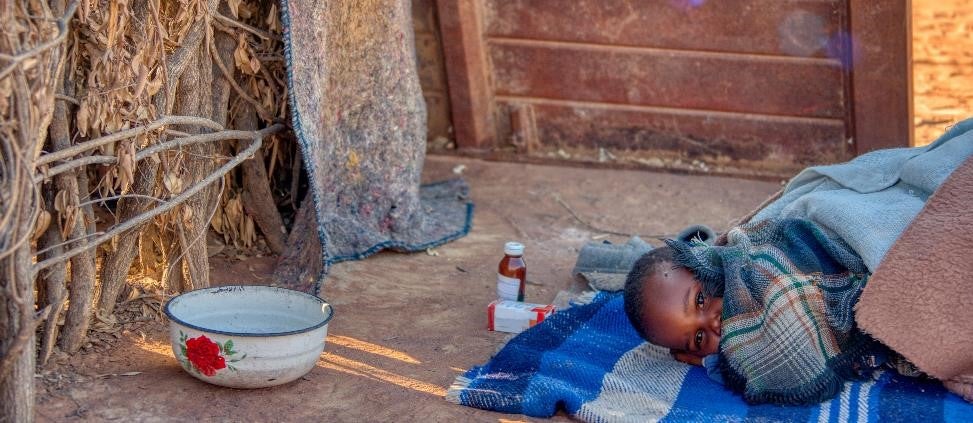 Tuberculosis remains one of the top 10 killers worldwide. Photo: Shutterstock
Tuberculosis remains one of the top 10 killers worldwide. Photo: Shutterstock
Tuberculosis (TB) – an ancient disease remains one of the top 10 killers worldwide
At today’s World TB Day, it’s timely to remember that 10 million people developed TB and 1.5 million died from TB in 2020 - the latest available data. Much progress has been made during the last decade in reducing TB incidence and deaths with many high-TB burden countries were on track to reach the 2025 TB milestones. Unfortunately, the COVID-19 pandemic has threatened to reverse this progress.
For example, in 2020, of the 10 million new TB cases, only 5.8 million cases were diagnosed and notified, reflecting an 18-percent decrease from 2019. Even more concerning, we saw for the first time rising TB deaths with 1.5 million people dying, an increase of 100,000 cases compared to 2019. Limited access to care and treatment, including preventive treatment and treatment of multidrug resistant TB (MDR-TB) likely accelerates TB transmission rates.
The World Bank team, through several studies conducted in Indonesia, Kyrgyzstan, Malawi, Mozambique, and Peru, found that the pandemic’s effects on tuberculosis incidence and mortality will likely be exacerbated in the medium and long term. Using the Optima Model, these studies estimate, in those 5 countries, without a catch-up plan, an increase of new latent TB infections of up to 23%, new active infections of up 11%, and TB-related deaths of up to 20%, over the five years from 2020 to 2024.
In 2020 alone, the COVID-19 pandemic pushed more than 100,000 people in poverty
Recognizing the serious consequences of TB on human health and development outcomes, the World Health Organization (WHO) and UN Member States are committed to ending the TB epidemic through the adoption of WHO’s End TB Strategy (2015-2035), as well as the UN Sustainable Development Goals (SDGs).
It is estimated that nearly 20% of global tuberculosis incidence is attributable to undernutrition. In countries with high tuberculosis burdens, such as India, this rate is higher— more than 50% in many Indian states. The COVID-19 pandemic’s negative impact on poverty and malnutrition further complicates the TB epidemic’s trajectory in the coming years. With this in mind, well-developed social protection programs and policies aiming to prevent out-of-pocket expenditures among poor TB patients are critical.
Innovative strategies are effective in countering the negative impacts of COVID-19 pandemic
All five National TB Programs (NTP) in in the countries we reviewed have responded and continue to respond to COVID-19-related disruptions with innovative strategies, especially through an expansion of targeted active TB case finding, such as mobile vans and contact tracing.
In these countries, mobile TB services and digital technologies have played an important role as part of the catch-up plan to accelerate TB testing and treatment. Mobile vans equipped with handheld X-ray machines and collection services can improve the bacteriological confirmation of TB.
These mobile services have also proved to be equally important in treatment adherence (through Video Direct Observed Therapy), raising community awareness, and linking to existing TB community services during the COVID-19 pandemic. This has resulted in minimal disruption to TB service availability in four of the five countries examined, with three of these countries still being on track to achieve a best-case scenario outcome with increases of less than 3% to each of new latent and active TB infections and TB-related deaths.
Integrated HIV and TB services and maintenance of ART in high HIV/TB settings should be top priorities
These studies on Malawi and Mozambique also found that most of the increase in TB infections and deaths can be attributable to ART (antiretroviral therapy)-related service disruptions. Both countries have high TB and HIV co-infection.
For instance, in Malawi, 47% of TB patients were known to be HIV positive in 2019, and 60% of TB-related deaths were estimated to be among people living with HIV (PLHIV). A disproportionate 80% of the additional TB-related deaths were estimated to occur among PLHIV.
Both Malawi and Mozambique were able to maintain high coverage of HIV testing and ART among TB patients living with HIV, over 90%, during the pandemic. This is largely thanks to adaptive strategies in response to disruptions caused by COVID-19, including the expansion of integrated HIV/TB services, community-based drug distribution, and multi-month dosing of ARV and TB drugs.
These approaches can be used to address other public health problems, especially at the primary care level. Diabetes or hypertension control at community level are few examples. This way, large investment in TB program could also lead to improvements of other health outcomes.
Choosing “Invest to End TB. Save Lives” as the theme of the World TB Day 2022 is timely, especially in the context of the COVID-19 pandemic, which has put “End TB” progress at risk. The World Bank studies in Indonesia, Kyrgyzstan, Malawi, Mozambique, and Peru have shown us that the path to recovery is possible and increasing TB notifications is urgent and can be achieved with mobile TB services, community outreach and innovations in diagnostics.




Join the Conversation